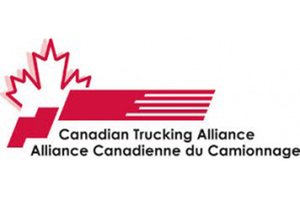In an annual meeting in December, the Task Force on Vehicle Weights and Dimensions Policy highlighted the many efforts achieved and/or underway that tie in with the Canadian Trucking Alliance’s (CTA) SMART approach to GHG regulations, reported the CTA.
A video released by the CTA shows Canadian tractor trailers are 22 per cent more energy efficient than their American counterparts. The SMART (Safe, Managed, Adaptable, Reliable and Tested) approach’s first phase covers tractors and engines from model years 2014 to 2018. The second phase will cover the entire vehicle.
“The key to CTA’s strategy from weights and dimensions standpoint is to keep as many options available to carriers in spec’ing their equipment as possible,” said Geoff Wood, vice-president Operations and Safety with the CTA. “Whether this is providing regulatory changes for boat tails, or increasing tractor wheel-base limits to accommodate a myriad of emissions reductions technologies, the pace at which the Task Force, Council of Deputies and Council of Minsters Responsible for Transportation and Highway Safety is working to make the necessary changes to the National MoU or support research to validate changes to the MoU very much appreciated.”
The CTA said allowances for APUs (2011), boat tails (2014) and tractor wheel-base limits (2016) have all been accommodated in the MoU and the provinces are working to finalize regulations. In the year over period 2015-2016, work on moving single tires towards parity with duals is now underway in the remaining provinces and the necessary funding and research needed to set the foundation in the MoU is underway, as is work on smart lift axels for semi-trailers.
With much of the policy work completed or underway, the CTA said the last part of the equation is to determine how to accommodate for increased tractor tare weights because of new GHG technologies. Whether I be increased battery weights, heavier engines, or the need to accommodate alternative fuel systems, the CTA will be working with its membership and the Task Force over the course of the year to determine the most suitable approach to ensure vehicle configurations remain efficient.


